

| History
North African Traditions with
Sloughis All photographs copyrighted to their photographers. Please do not use for any purpose without asking. Morocco
Tunisia Ear crop and brand marks on the front legs, muzzles In Tunisia the ears of Sloughis, whether males or females, are often traditionally cropped "to make them hear better" or "to prevent their ears from being torn by jackals", and the brandmarks on the legs are "to strengthen the legs". Brandmarking is an old tradition in Tunisia.
Working dogs,
guard dogs,
shepherds dogs and Sloughis can have their ears cropped in Tunisia, the
ear cropping is not limited to the Sloughis. Brandmarks are usually
seen
on Sloughis.
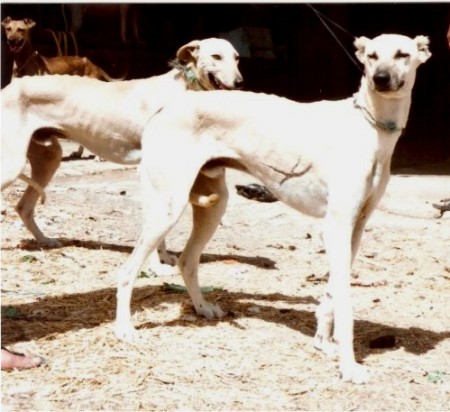 Brandmarks in the form of a cross on a Nomad bred Sloughi's chest, as well as cropped ears. One says that this "cross" tears the skin's "tissue" enabling thus the Sloughi to stretch out well when running. Others say it is a purely decorative tattoo. It is tradition among Berbers, the indigenous people of Northern Africa, to tattoo their animals. © Ochi 2011 . 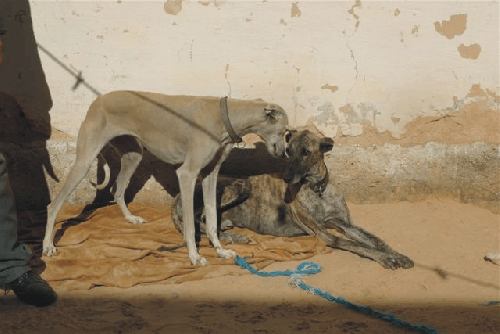 A Tunisian Sloughi pair with cropped ears and no brandmarks © G.Schwartz, 2007 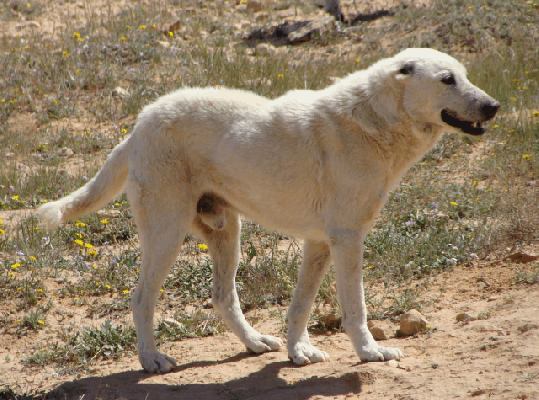 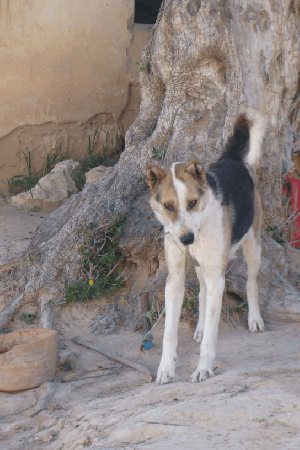 Left: Tunisian shepherd dog, right: Tunisian guard dog, both with cropped ears © de Caprona, 2008 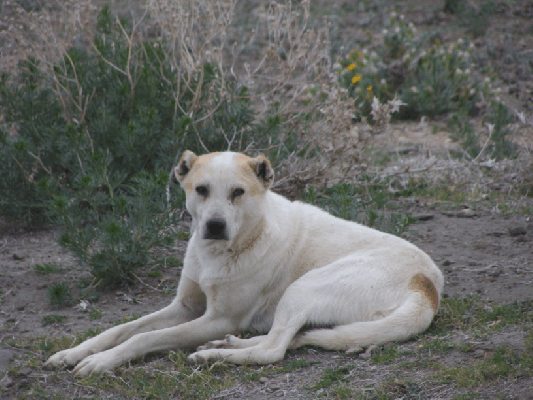 Tunisian working dog with cropped ears © de Caprona, 2008 Not all dogs or all Sloughis have their ears cropped in Tunisia or have brandmarks 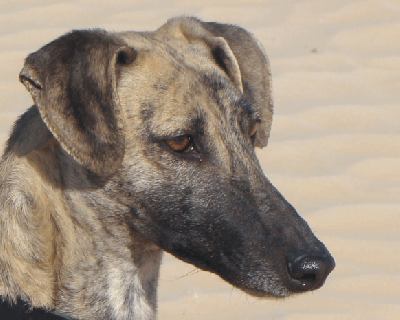 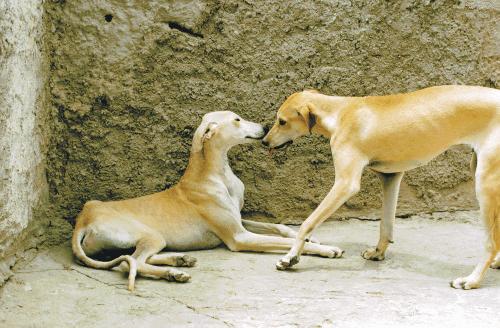 Left: Tunisian desert Sloughia,© de Caprona, 2008; right: Tunisian Sloughis with intact ears and no brandmarks © A.d'Ersu 1999 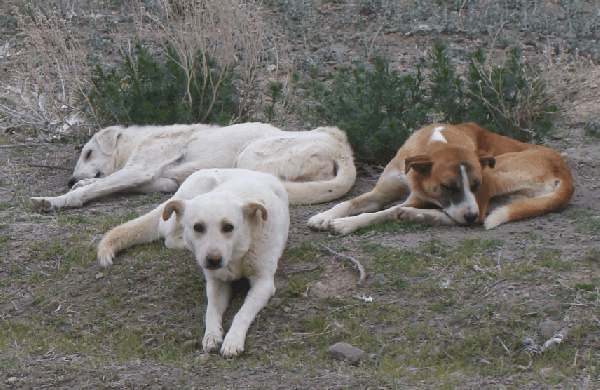 Tunisian working dogs with intact ears. © de Caprona, 2008 Algeria In the 19th century, the General Daumas in his description of the Sloughi mentionned that 5 lines were brand marked on each front leg of a Sloughi to consolidate the joints. Algeria is a large country located between Morocco to the west and Tunisia to the east. It is sometimes difficult to access, but it seems this tradition may not be as prevalent anymore. At least in the regions of Bensekrane, Cheaaria, Tlemcen, El Oued, and Sebdou, the Algerian Sloughi's ears do not seem to be cropped, nor are his front legs brand marked. I have seen one picture of Algerian Sloughis hunting boar in which two had a henna marking on the top of their heads, and other pictures on which the dogs had henna on their toes and the bottom of their throats.
A recent picture of a Sloughi from the region of Bensekrane with Henna on his head. According to the owner Henna is used to make the Sloughi look beautiful. It is also a symbol of a Sloughi's strength.
Libya No widespread traditions are known for this country regarding the Sloughi. If you know of any, or have pictures of Libyan Sloughis please contact the webmaster |